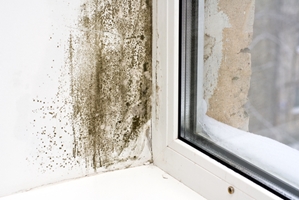Relative humidity (RH) is defined as the amount of water vapour in the air in relation to the maximum volume of water vapour an environment could contain at a specific temperature. RH can impact workplace comfort levels, hygiene and even productivity.
To maintain adequate RH levels, organisations often contract HVAC R mechanics to test humidity levels in their facilities. These professionals use many instruments to do so, including those that can send their data to smartphones, such as Testo’s VAC Smart probe set.
Anemometers, thermohygrometers and other devices provide HVAC R technicians with the data they need to determine how to adjust equipment to either raise or reduce RH levels. How should facility managers maintain a proper balance?
 Controlling humidity levels is a vital consideration.
Controlling humidity levels is a vital consideration.Managing RH
Level, a subsidiary of construction industry research firm BRANZ, listed a number of measures businesses, homeowners and others can take to control RH. For instance, opening windows and using other means to ventilate floors horizontally is an effective method to reduce RH.
Mechanical ventilation is also feasible. HVAC R mechanics should leverage extract fans to remove moisture from bathrooms, kitchens and other areas where water is prevalent. In addition, Level advised facility managers to install vents under suspended timber floors.
People are comfortable in a humidity range of between 30 and 80 per cent.
Which RH level is preferable? The Engineering ToolBox maintained that RH levels below 25 per cent can be uncomfortably arid. At the same time, levels over 60 per cent may cause unpleasantly wet conditions.
However, Level asserted that many people are comfortable in a humidity range of between 30 and 80 per cent, provided the air temperature is anywhere from 18 to 24 degrees Celsius. The Canadian Centre for Occupational Health and Safety noted that ideal office temperatures should typically lie between 21 and 23 degrees Celsius. In addition, these areas must have air velocities below 0.25 metres per second.
What causes humidity?
Knowing how to control RH also entails understanding how humidity is formed. A number of factors can cause high levels of RH, such as:
- Dish washing and cooking;
- Water leaks;
- Damp ground conditions; and
- Retained building moisture.
Accounting for these elements entails conducting visual inspections. However, Testo’s range of Smart Tools can help HVAC R technicians expedite assessments. To learn more about how these devices can further assist professionals, speak with Testo’s sales team today.









 Reduce cooking oil costs while ensuring quality
Reduce cooking oil costs while ensuring quality Expert knowledge on CO2 monitoring
Expert knowledge on CO2 monitoring Refrigeration knowledge - in 3 modules
Refrigeration knowledge - in 3 modules



